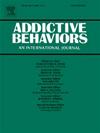基于戒烟尝试的新型戒烟行为可确定与长期戒烟相关的新基因
IF 3.7
2区 医学
Q1 PSYCHOLOGY, CLINICAL
引用次数: 0
摘要
背景任何年龄段的戒烟都能提高生活质量、减少疾病和降低死亡率。每年大约有一半的吸烟者试图戒烟,但只有 7% 的人能够在没有帮助的情况下保持长期戒烟。我们在癌症预防研究-3队列中进行了一项全基因组关联研究(GWAS),根据戒烟难度(DQS)确定了另一种表型。困难戒烟者被定义为至少尝试过十次戒烟(无论成功与否),而容易戒烟者被定义为只尝试过一次戒烟。研究只选取了欧洲血统的人。在 10,004 名吸烟者(5,071 名难戒者,4,933 名易戒者)中,我们评估了 DQS 的遗传率,并使用逻辑回归评估了 DQS 与每个全基因组变异之间的关联,同时调整了混杂因素,包括吸烟强度(每天吸烟支数)。虽然没有变异在全基因组中具有显著性,但有几个基因的变异达到了亚阈值水平(p < 10-4)。MEGF9(rs149760032)是一种主要在中枢神经系统中表达的跨膜蛋白,它的一个变异与DQS的关系最为密切(OR = 0.60,p = 1.3x10-7)。在 GLRA3(rs73006492,OR = 0.77,p = 5.6x10-7)和 FOCAD(rs112251973,OR = 1.96,p = 1.8x10-6)中也检测到了与 DQS 相关的其他变异,这些变异与吸烟强度无关,可能通过大脑和呼吸系统的途径与戒烟有关。本文章由计算机程序翻译,如有差异,请以英文原文为准。
A novel smoking cessation behavior based on quit attempts may identify new genes associated with long-term abstinence
Background
Smoking cessation at any age has been shown to improve quality of life, decrease illness, and reduce mortality. About half of smokers attempt to quit each year, but only ∼ 7 % maintain long-term abstinence unaided. Few genetic factors have been consistently associated with smoking cessation, possibly due to poor phenotype definition.
Methods
We performed a genome-wide association study (GWAS) with an alternative phenotype based on the difficulty of quitting smoking (DQS) in the Cancer Prevention Study-3 cohort. Difficult quitters were defined as having made at least ten quit attempts, whether successful or not, and easy quitters as having quit after only one attempt. Only individuals of European ancestry were selected for the study. Among 10,004 smokers (5,071 difficult quitters, 4,933 easy quitters), we assessed the genetic heritability of DQS and evaluated associations between DQS and each genome-wide variant using logistic regression while adjusting for confounders, including smoking intensity (cigarettes per day).
Results
The genetic heritability of the DQS phenotype was 13 %, comparable to, or higher than, the reported heritability of other smoking behaviors (e.g., smoking intensity, cessation). Although no variants were genome-wide significant, several genes were identified at a subthreshold level (p < 10-4). A variant in MEGF9 (rs149760032), a transmembrane protein largely expressed in the central nervous system, showed the strongest association with DQS (OR = 0.60, p = 1.3x10-7). Additional variants associated with DQS independently by smoking intensity were also detected in GLRA3 (rs73006492, OR = 0.77, p = 5.6x10-7) and FOCAD (rs112251973, OR = 1.96, p = 1.8x10-6) and are plausibly related to smoking cessation through pathways in the brain and respiratory system.
Conclusions
The use of an alternative cessation phenotype based on difficulty quitting smoking facilitated the identification of new pathways that could lead to unique smoking treatments.
求助全文
通过发布文献求助,成功后即可免费获取论文全文。
去求助
来源期刊

Addictive behaviors
医学-药物滥用
CiteScore
8.40
自引率
4.50%
发文量
283
审稿时长
46 days
期刊介绍:
Addictive Behaviors is an international peer-reviewed journal publishing high quality human research on addictive behaviors and disorders since 1975. The journal accepts submissions of full-length papers and short communications on substance-related addictions such as the abuse of alcohol, drugs and nicotine, and behavioral addictions involving gambling and technology. We primarily publish behavioral and psychosocial research but our articles span the fields of psychology, sociology, psychiatry, epidemiology, social policy, medicine, pharmacology and neuroscience. While theoretical orientations are diverse, the emphasis of the journal is primarily empirical. That is, sound experimental design combined with valid, reliable assessment and evaluation procedures are a requisite for acceptance. However, innovative and empirically oriented case studies that might encourage new lines of inquiry are accepted as well. Studies that clearly contribute to current knowledge of etiology, prevention, social policy or treatment are given priority. Scholarly commentaries on topical issues, systematic reviews, and mini reviews are encouraged. We especially welcome multimedia papers that incorporate video or audio components to better display methodology or findings.
Studies can also be submitted to Addictive Behaviors? companion title, the open access journal Addictive Behaviors Reports, which has a particular interest in ''non-traditional'', innovative and empirically-oriented research such as negative/null data papers, replication studies, case reports on novel treatments, and cross-cultural research.
 求助内容:
求助内容: 应助结果提醒方式:
应助结果提醒方式:


